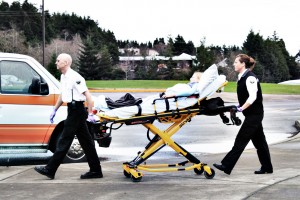
Pre-mortem exercises can be used to identify gaps in prevention strategies as well as to identify potential problems with emergency preparedness approaches
Pre-Mortem Exercises in School Safety
Over the years, I have become a big fan of the work of Dr. Gary Klein. An excellent writer, he does a great job of using stories to make his points stick. Better known in the fire service than in the other public safety disciplines, Dr. Klein has done a good bit of research on how people make what he refers to as high-stakes decisions. He has some especially helpful observations about how we can make better life and death decisions when faced with limited time and information.
One concept that I picked up from Dr. Klein’s excellent books is known as a pre-mortem exercise. I will attempt to do justice in boiling down the concept to fit the length of a blog. Dr. Klein maintains that the pre-mortem exercise can be used to test the concepts organizations use in an effort to identify flaws before something goes wrong. While we commonly think in terms of learning important lessons from a post-mortem once something has gone wrong, this concept uses a hypothetical scenario which presumes that our approach has failed. By assembling a team of people who are familiar with how the organization prevents and responds to problems, the team can often use their intimate knowledge to figure out why such a failure would occur. It is important that all participants in the activity are charged with assuming that the failure has taken place already. This is a critical point as this approach helps prevent people from claiming that a failure could not occur. Once tasked in this manner, participants are asked to figure out any vulnerabilities in the approach that could allow such a failure to occur.
Learn Your School Security Weaknesses Before an Incident Occurs
I believe that pre-mortem exercises can be used to identify gaps in prevention strategies as well as to identify potential problems with emergency preparedness approaches. For example, a school threat assessment and management team could be given a hypothetical scenario where an individual carries out a school shooting after having been evaluated by the team. A multidisciplinary crisis team could then participate in a separate pre-mortem exercise where they are told to assume that when this shooting occurred, the organization’s crisis plans failed badly.
I agree with Dr. Klein’s assertions that organizations that use pre-mortem exercises are less likely to experience the failures that they simulate. Anyone who has been through a post-mortem review of an incident involving one or more fatalities can attest that even the most difficult pre-mortem exercise would be preferable to the difficult experience of a fatal incident.